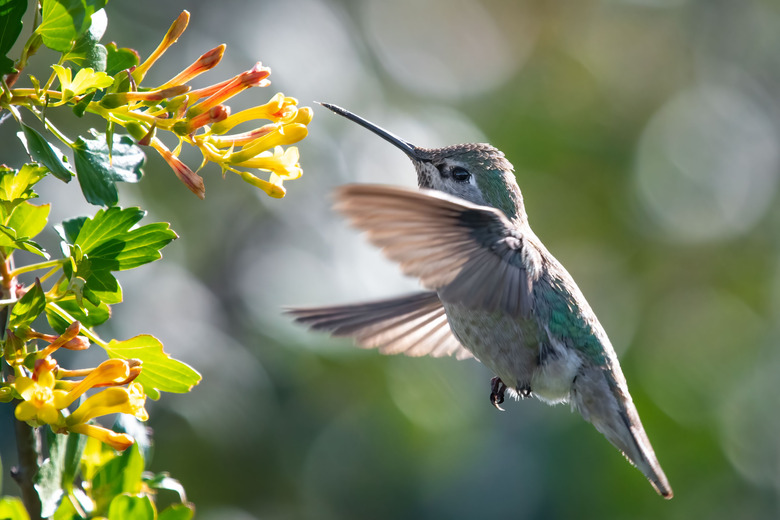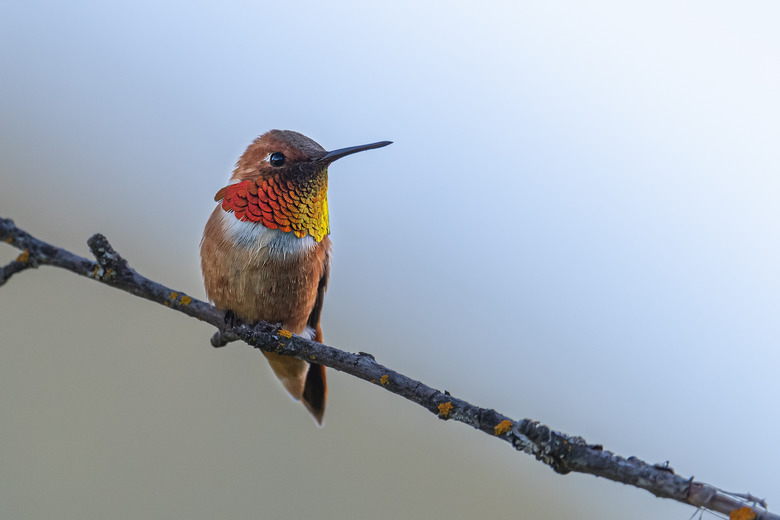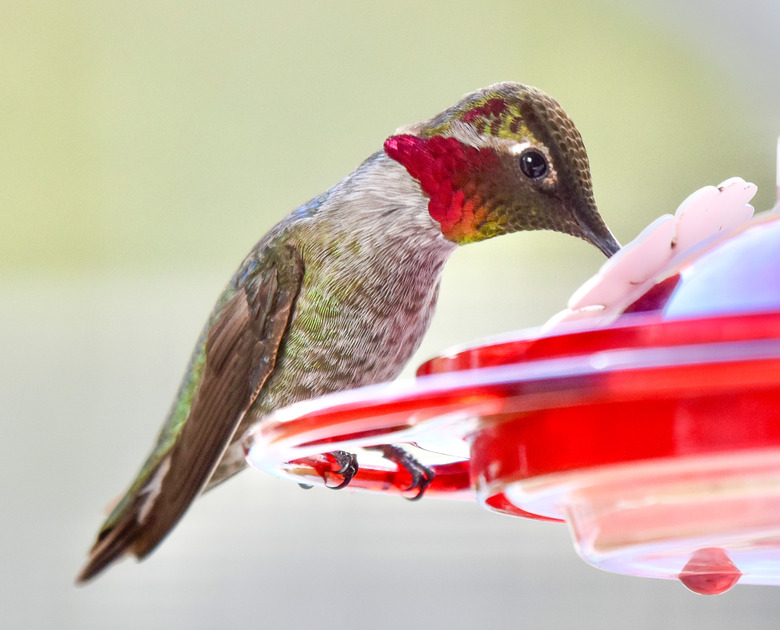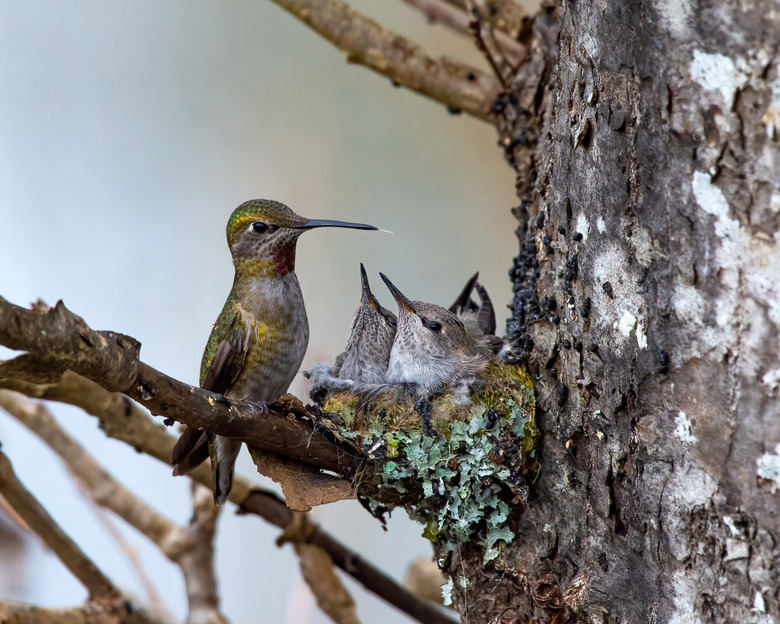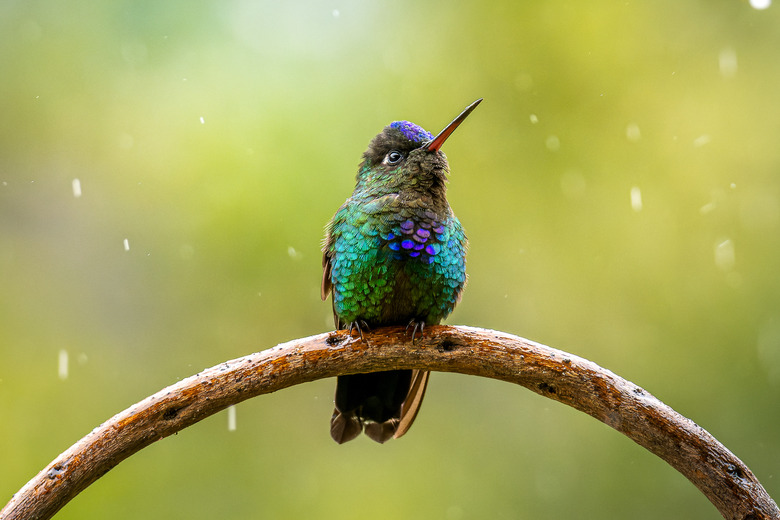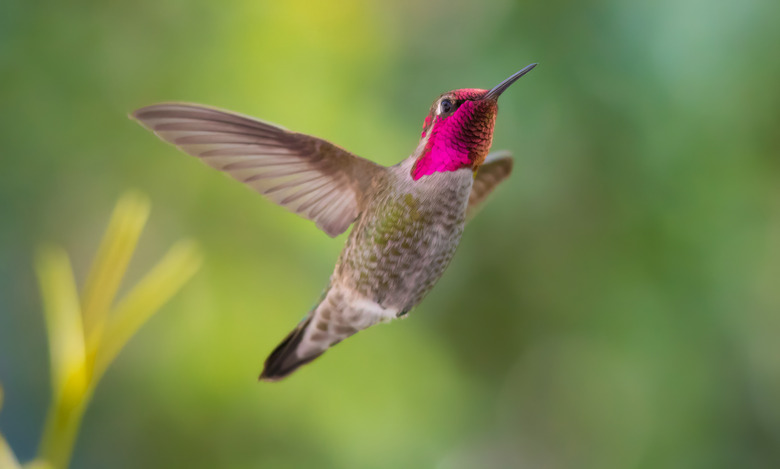Hummingbird House Plans: How To Make A DIY Hummingbird House
We may receive a commission on purchases made from links.
Hummingbirds are not attracted to conventional bird houses. Instead, they prefer an open home in the shape of a little cup, which is why they build nests in the forks of tree branches. You can build a DIY hummingbird house, but if it is square like most conventional birdhouses are, the hummingbirds you are trying to attract won't be interested in it. Instead, your hummingbird house plans should be more like a cup or the fork of a tree like what they are naturally attracted to.
Building a hummingbird bird house
Building a hummingbird bird house
There are a few ways to approach building a hummingbird bird house. Hummingbirds build tiny cup-shaped birdhouses in the fork of the branches on a tree. If you are trying to attract hummingbirds, you'll have the best results if you mimic what they do in nature. They don't like a lot of wind and their nests can't be open to a downpour, so proper placement of your hummingbird's new house is also important.
First, think of what materials you want to use or have experience with. Here are some options for materials that you could use to create a DIY hummingbird nest:
- Use papier-mache — Inflate a water balloon with air and use strips of newspaper dipped in glue to create a cup form. Once the glued strips dry completely, pop the balloon with a pin and allow it to deflate completely. Peel the balloon away from the papier-mache nest form.
- Use dowel rods — Create your DIY hummingbird house by attaching short dowel rods to one another to form an "X" or "Y" shape that creates a forked form. Hang it under the eaves of your home or in a tree. Attach a leaf-sized sheath of plastic a few inches above the dowels to create a sense of shelter.
- Use pieces of pipe — You can use pieces of copper pipe attached together in a similar way as the dowels to create an "X" or "Y" shape. Be sure your pipe hummingbird house is in the shade to avoid having the metal heat up too much.
- Use a dried gourd — A small dried gourd can be hollowed out so the hummingbird can create its nest in the cup-shaped bottom part of the gourd. Drill small holes near the top to attach a wire or cord for hanging.
- Use upcycled materials — A plastic bottle or anything else that is small and with a cup shape can be repurposed in a similar way as the dried gourd. Consider a spray paint can lid or the lid of liquid laundry detergent, for instance.
- Make a wooden hummingbird house — Put together pieces of wood into an "X" or "Y" shape that creates a fork.
- Use clay — Mold the clay into a cup shape and dry it. Create a supportive base for it or attach loops for hanging it.
Get to know hummingbirds
Get to know hummingbirds
Hummingbirds, with their opalescent colors and wings that blur as they zip from flower to flower, can provide hours of entertainment. If you're a photographer or birder, then there's even more reason to host these energetic beauties. While it's relatively easy to attract hummingbirds into your yard by setting out a hummingbird feeder, it takes a bit more effort to create a hummingbird nesting area that will be used. Nonetheless, by creating the right setting and emulating conditions that hummingbirds prefer, it's possible to entice them to build a nest in your yard where you might get to see baby hummingbirds.
Want to see some hummingbird houses in nature? Visit the UC Davis Arboretum in Northern California. The newest addition to the arboretum is the Hummingbird GATEway Garden which highlights the plants, water sources, and habitat that hummingbirds are attracted to.
Set up a hummingbird feeder
Set up a hummingbird feeder
Hang one or two hummingbird feeders filled with a sugar solution made of four parts water and one part sugar in an empty space in the yard. Avoid commercial hummingbird sugar solutions that are red in color — these contain color additives and chemicals that the hummingbird does not need.
The hummingbirds find feeders because they have excellent eyesight and are attracted to bright colors. Hummingbird feeders that you buy in stores are typically red, which is enough to attract hummingbirds to the feeder so the sugar syrup does not have to be red as well. Hummingbirds can also see the color yellow. They also can see ultraviolet colors.
If you plant nectar-producing flowers to give hummingbirds a natural food source, they will be even more likely to visit your yard and garden. Hummingbird feeders will often attract ants who want the sugary liquid. You can purchase ant guards to add on to your feeder if this becomes a problem for you.
If there are few or no hummingbirds already in your area, it may take a while for them to find your feeder. Learn about the hummingbirds in your area — some migrate and some do not. Only about 15 species will regularly make the migration from Mexico and Central America to the United States and Canada.
Keep your hummingbird feeder clean
Keep your hummingbird feeder clean
Keep your feeder clean and place fresh syrup in it so it is ready when they are. An easy-to-clean feeder, like this one, will make a lot of difference since you will be cleaning it often. The easiest ones to clean have wide openings on the container that holds the syrup. This one has a flat and wide opening so you can clean it without having to use special bottle brushes.
If weather is hot or your feeder is in hot sun, put out less syrup and clean your feeder and replace the syrup more often. You can make about a quart of syrup at a time and keep it in the refrigerator until you are ready to use it.
Protect your hummingbird nest
Protect your hummingbird nest
Place your hummingbird feeder and your DIY hummingbird nest near trees and shrubs that can shelter it from the wind. Hummingbirds choose nesting spots that are in sheltered areas to prevent their eggs and young from being blown from the nest by the wind. Tiny hummingbird eggs are vulnerable to strong winds. Ensure that you have trees and shrubs with forked branches because hummingbirds like to build nests in the "Y" where branches connect.
Water sources for hummingbirds
Water sources for hummingbirds
Install a bubbling, dripping, or misting water source in your yard to attract hummingbirds. Hummingbirds prefer water sources with moving water rather than stagnant water.
Attract hummingbirds to your DIY nest
Attract hummingbirds to your DIY nest
Hanging red hummingbird feeders is usually all you have to do to attract hummingbirds to your feeder. Hummingbirds are attracted to red flowers. Hummingbirds are also strongly attracted to the color purple as well as yellow, so providing plants with those colorful blooms may attract them to your outdoor space and encourage them to nest.
Leave spiderwebs in your outdoor space alone and intact. Hummingbirds often use the delicate threads to line and strengthen the construction of their nests.
Caring for your hummingbirds
Caring for your hummingbirds
- Avoid using pesticides in the yard because they can be harmful to hummingbirds and their young.
- Don't put red food coloring in the hummingbird water — it can make them sick. Boil the water and sugar solution if you make a large batch to refrigerate.
- If you fill the feeders every day or two, making it fresh each time, you don't need to boil it. Clean the feeder each time you replace the syrup, to avoid feeding the hummingbirds moldy sugar water.
References
- "Birdhouses and How to Attract Specific Species of Birds;" Society of Landscaping and Yard Work Professionals; 2007
